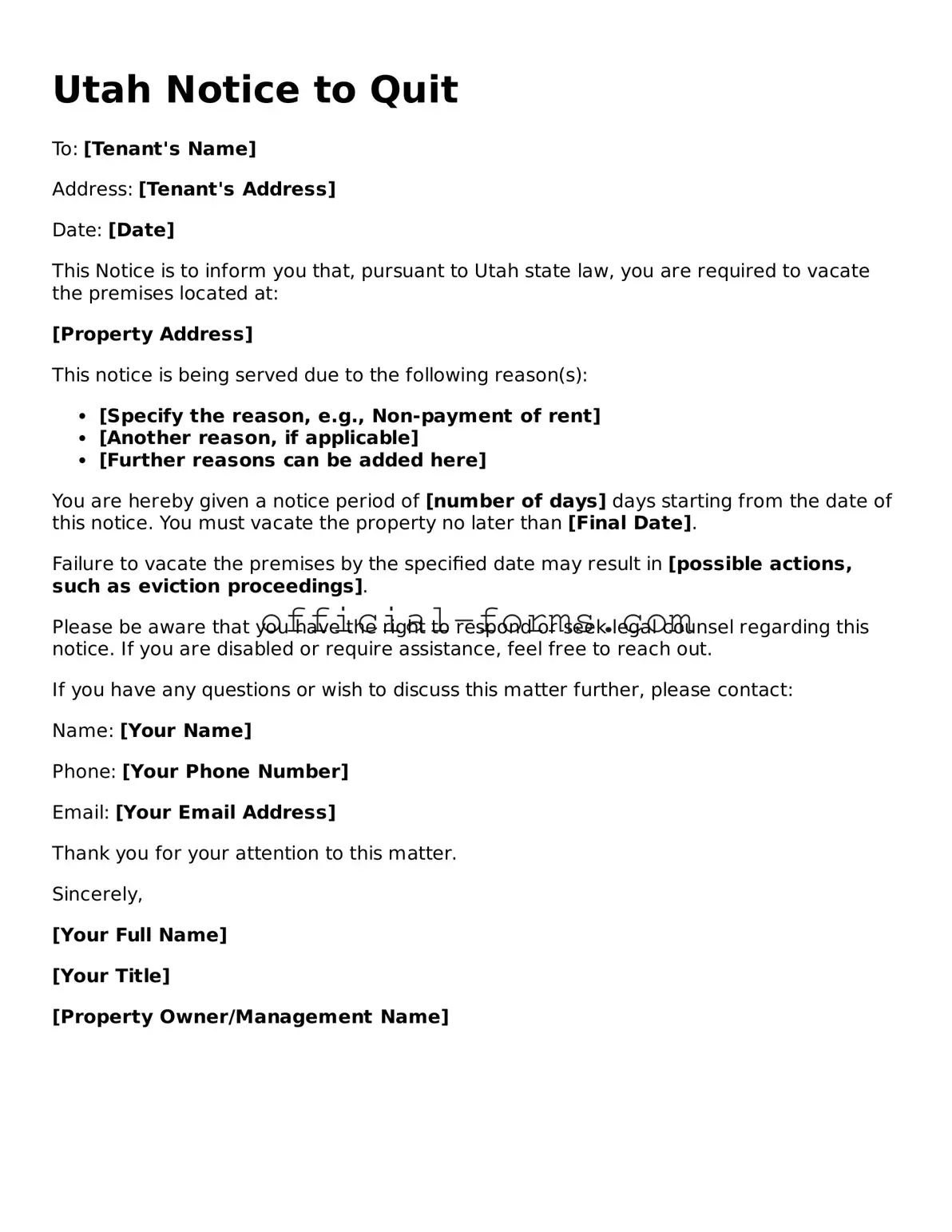Official Utah Notice to Quit Document
The Utah Notice to Quit form serves as a formal document that landlords use to inform tenants of their intent to terminate a rental agreement. This notice is a critical component of the eviction process, providing tenants with essential information about the reasons for termination and the time frame in which they must vacate the property. Understanding this form is vital for both landlords and tenants to navigate their rights and responsibilities effectively.
Open My Notice to Quit Now
